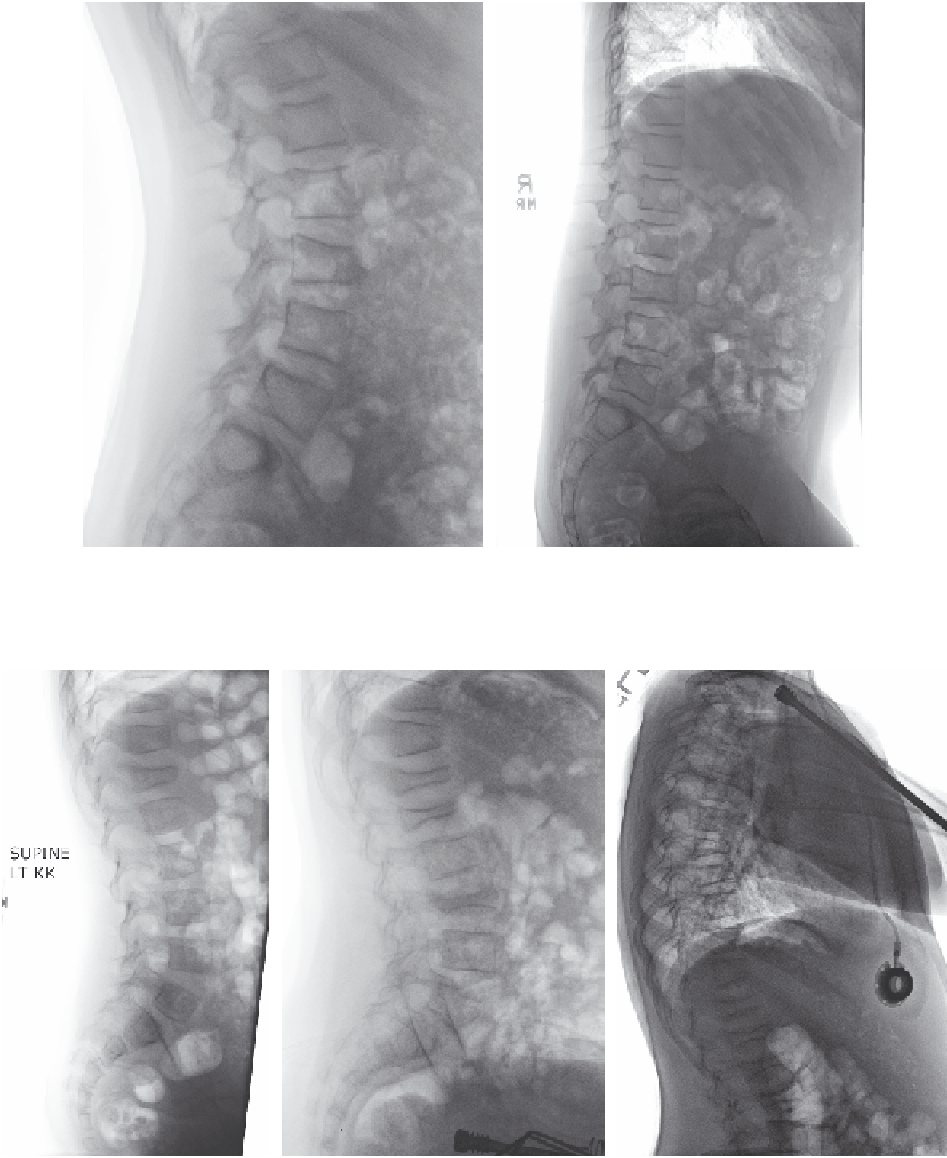what-when-how
In Depth Tutorials and Information
(A)
(B)
FIGURE 44.4
(A) Nine-year, 2-month-old treated with pamidronate with type I OI sustained this flexion fracture of L3 with minimal
trauma. She was treated with restricted activity and mild analgesics only. (B) Fourteen-month follow-up shows significant improvement in ante-
rior vertebral height and shape.
(A)
(B)
(C)
FIGURE 44.5
(A) Five-year-old community ambulator with treated type III chronic T12 wedging without back pain. (B) Acute injury at the
age 8 years, 6 months from a fall from a playground slide sustaining acute significant wedging of L1, 2 and 4, treated with orthoses. (C) Thirteen-
month follow-up at age 9 years, 7 months with partial remodeling but persistent junctional kyphosis.
in the appropriate situation, although this has not
been studied. Residual kyphotic deformity following
a fracture does not appear to decrease chest volume.
22
Increased AP diameter of the chest has also been noted
in patients with OI.
24
Orthotic treatment may be an option in individuals
with type I OI who tend to have more pain and acute
loss of vertebral height than younger children with
more severe forms of OI. In type I, these individuals
tend to be more active and are clearly at more risk than

